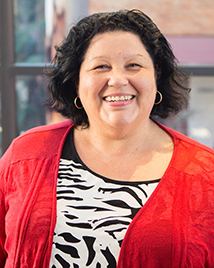MY INTEREST IN Indigenous people’s use of social media began while I was completing a PhD on the politics of identity. My participants would talk about how they expressed their Indigenous identities on social media. After I graduated, I was fortunate enough to receive an Australian Research Council Discovery Indigenous grant to conduct a national research project exploring Indigenous people’s engagements on social media. The aim of the project was to provide a better understanding of how Indigenous people make use of online social network sites. In Australia, Indigenous people are enthusiastic users of mobile technologies and while rigorous data remains scant, research suggests that Indigenous people use social media at rates higher than non-Indigenous Australians. Drawing on data collected as part of a study conducted on Indigenous media habits by the McNair Ingenuity Research Institute, NITV journalist Tara Callinan revealed that, ‘Facebook usage among First Nations people is 20 per cent higher than the national average’.[i][ii] Even in the most geographically ‘remote’ areas of Australia, mobile technologies are becoming increasingly commonplace and Indigenous people in these locations are, like non-Indigenous people, very much entrenched in the use of social media.[iii]
The high rate of usage is explained by a range of reasons, including connecting with family and friends, interacting socially and culturally, and politically agitating for social justice. Social media platforms such as Facebook, Twitter and Instagram have become a vehicle not simply for communicating and networking among and between Aboriginal and Torres Strait Islander people, but also a tool for sharing different cultural practices, norms and expectations, and for help-seeking and responding to help-seeking. My research has revealed that Indigenous groups are using Facebook to maintain and learn language and to teach cultural traditions and protocols to younger generations. Sharing stories and knowledge is a vital part of our cultural learning and teaching, and social media is being used to help continue these practices. Social media has been identified as an intrinsic part of our daily routine; my research found that participants spend up to five hours per day on it.[iv]

Already a subscriber? Sign in here
If you are an educator or student wishing to access content for study purposes please contact us at griffithreview@griffith.edu.au





